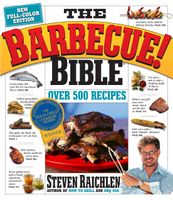Label
All
0
Clear all filters
🔥 Try our grilling cookbooks and save 25% on ckbk membership with code BBQ25 🔥
What’s the difference between dry-aged and wet-aged beef and does either process make a difference?
Appears in
Published 1998
Beef in its freshly slaughtered state is tough and stringy. All beef is aged for some period of time to make it tender and palatable. Dry aging takes the process to the ultimate level. Dry-aged beef is hung, unwrapped, in a temperature-controlled meat locker for as long as four weeks. During that time, some of the water in the meat evaporates, concentrating the flavor of the meat and improving the texture. The aging also gives the beef a deeper, richer, more complex taste (much the way aging improves cheese or wine). The downside of the process is that the meat can lose up to 25 percent or more of its original weight through evaporation and trimming, which accounts for dry-aged beef’s considerable expense. Still, for those occasions that you want beef at its best, this is the way to go.
Part of
Advertisement
Advertisement
The licensor does not allow printing of this title


